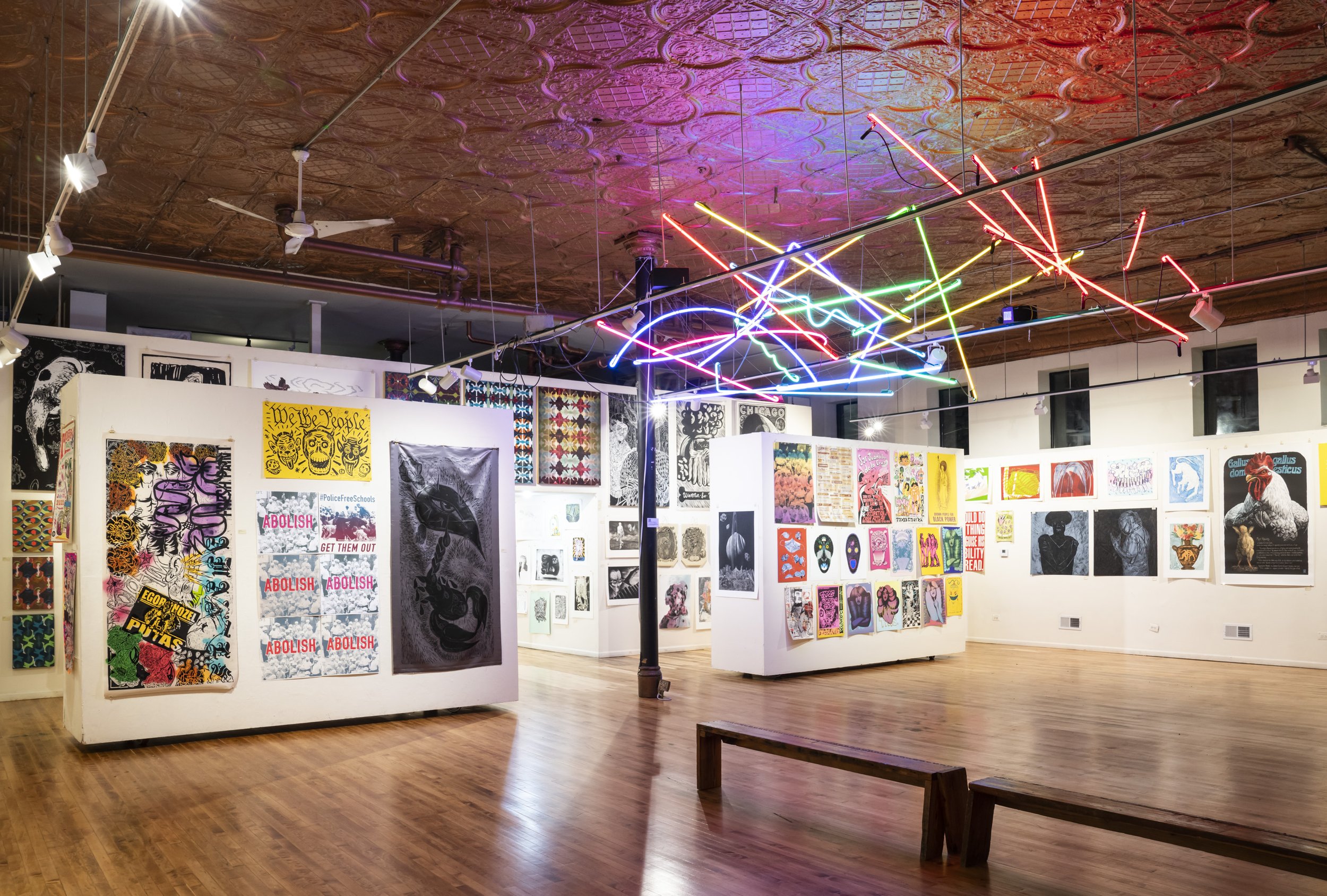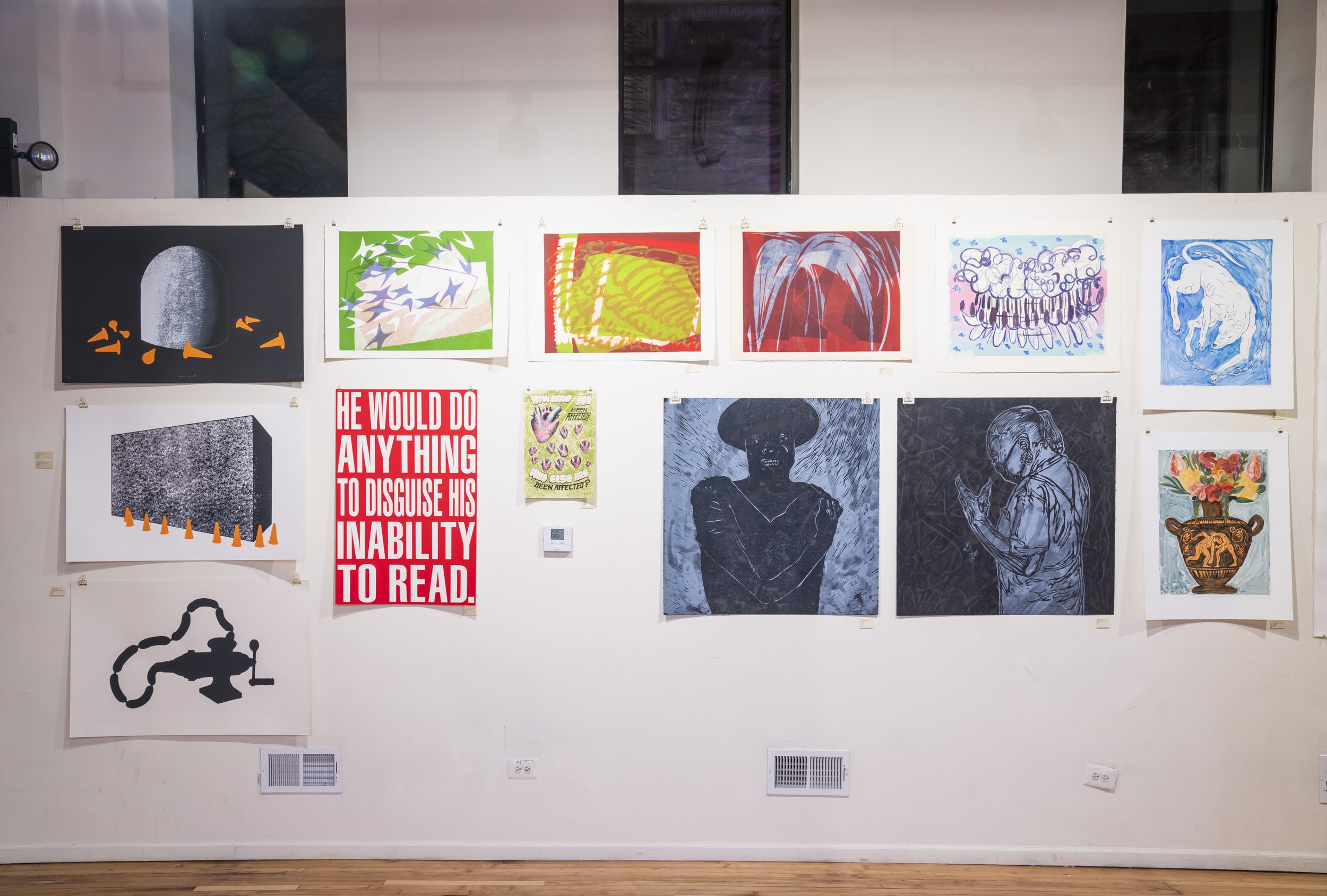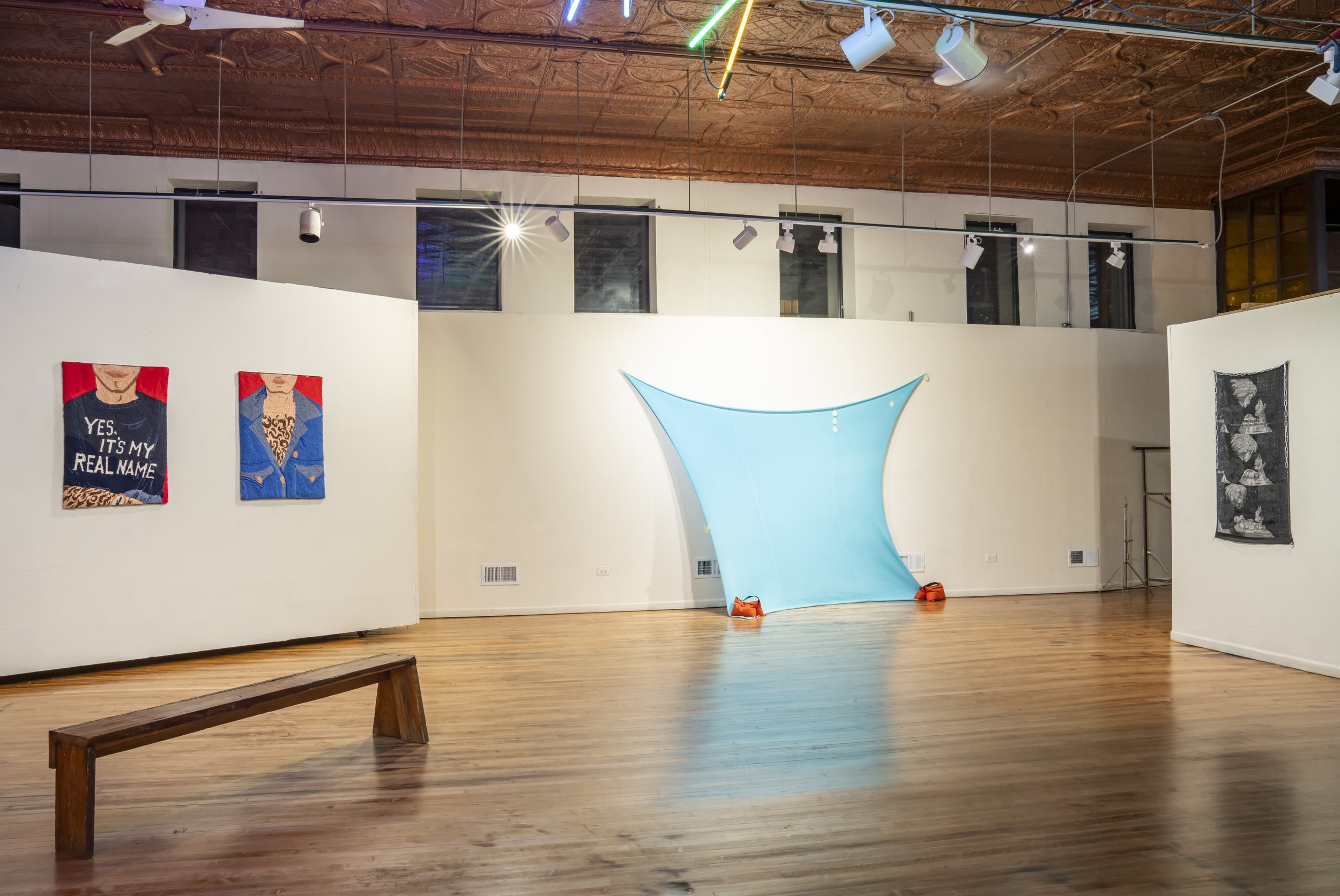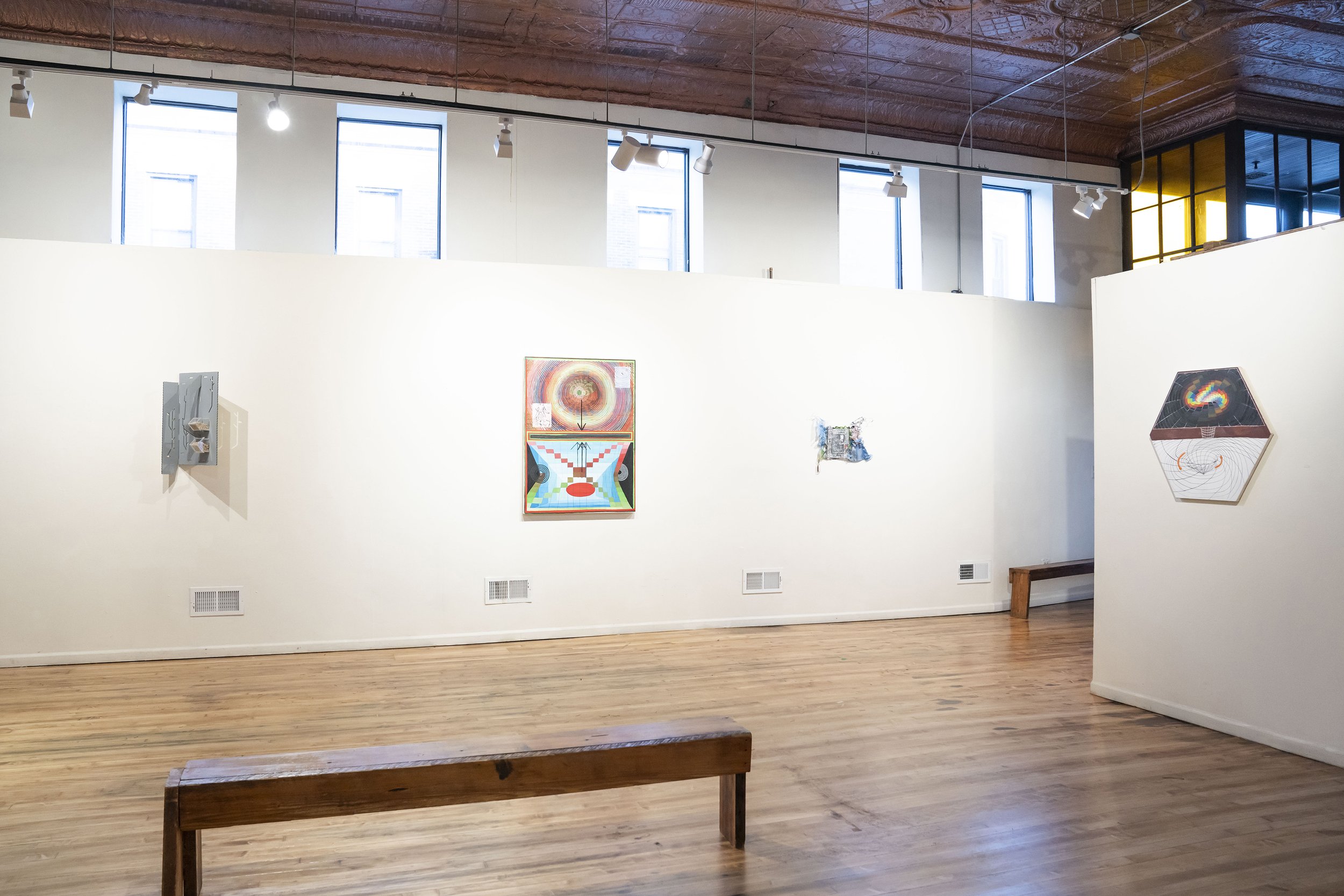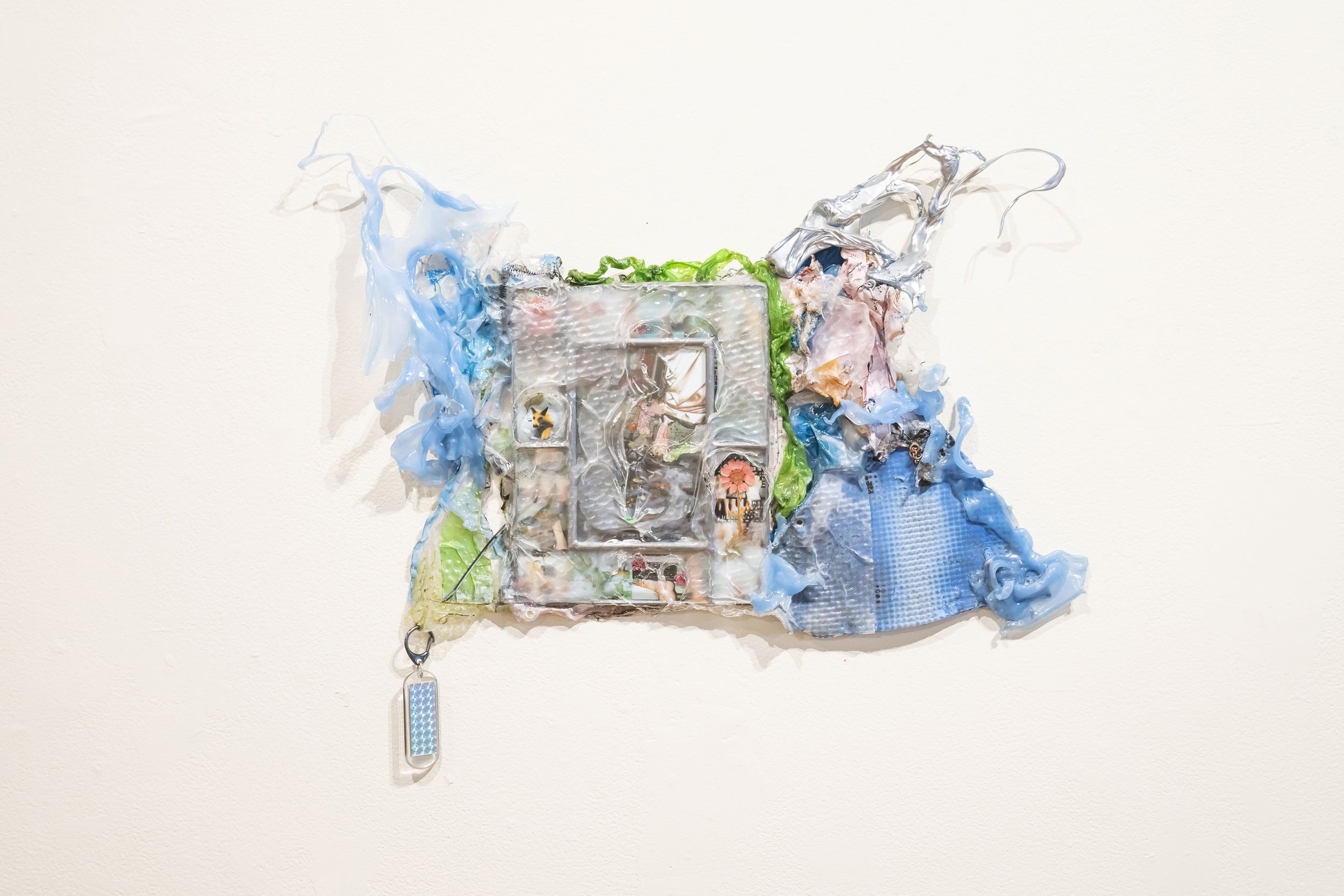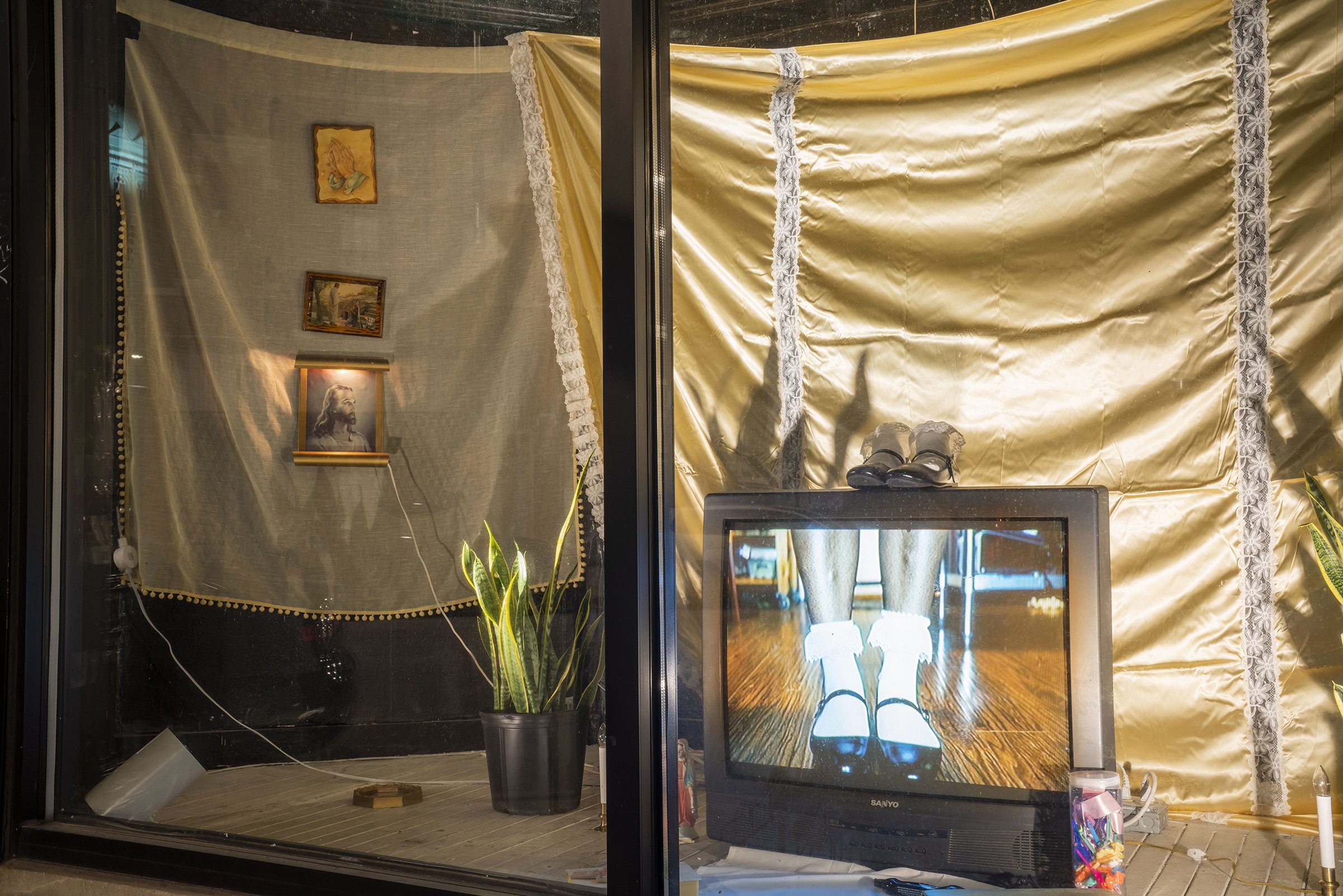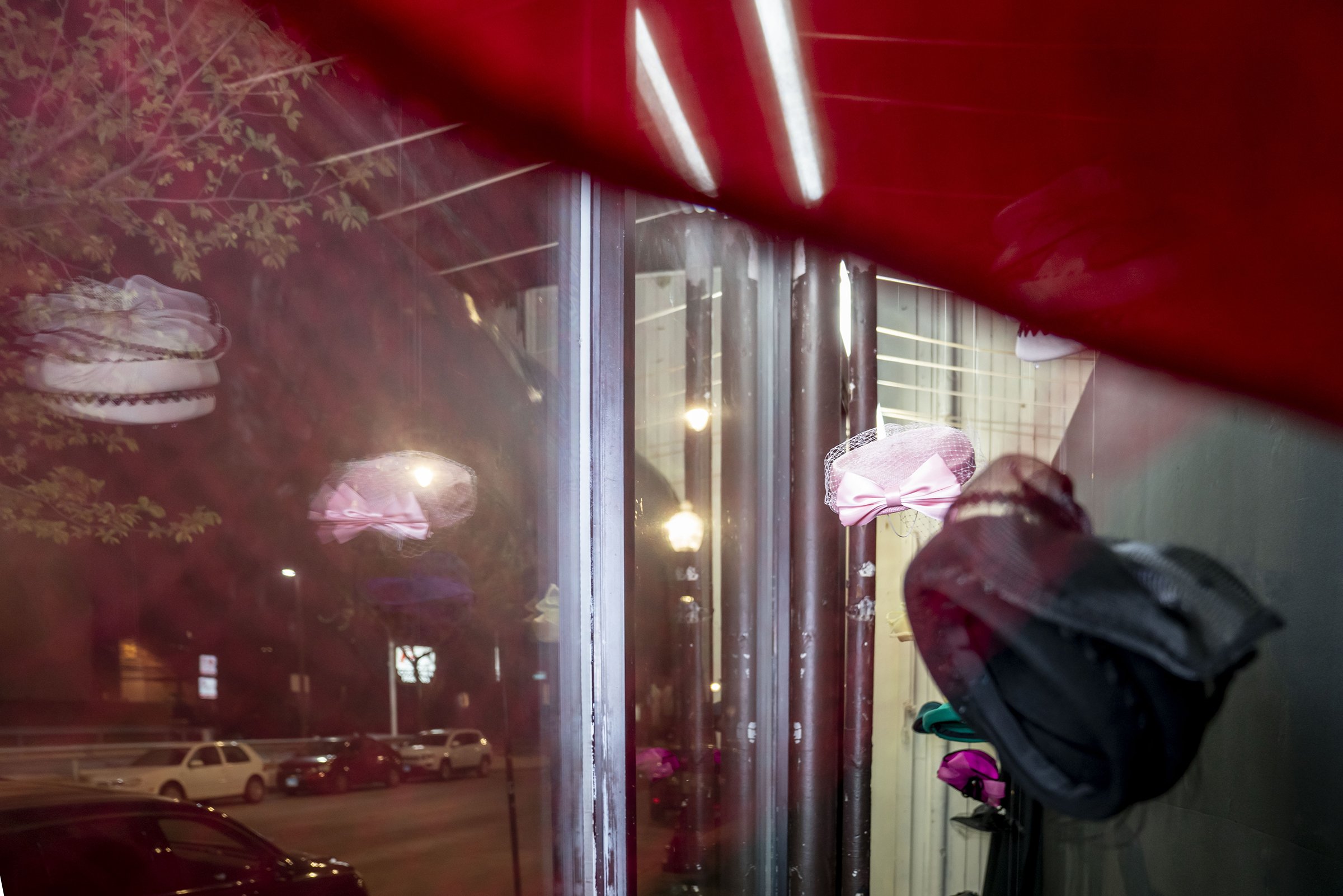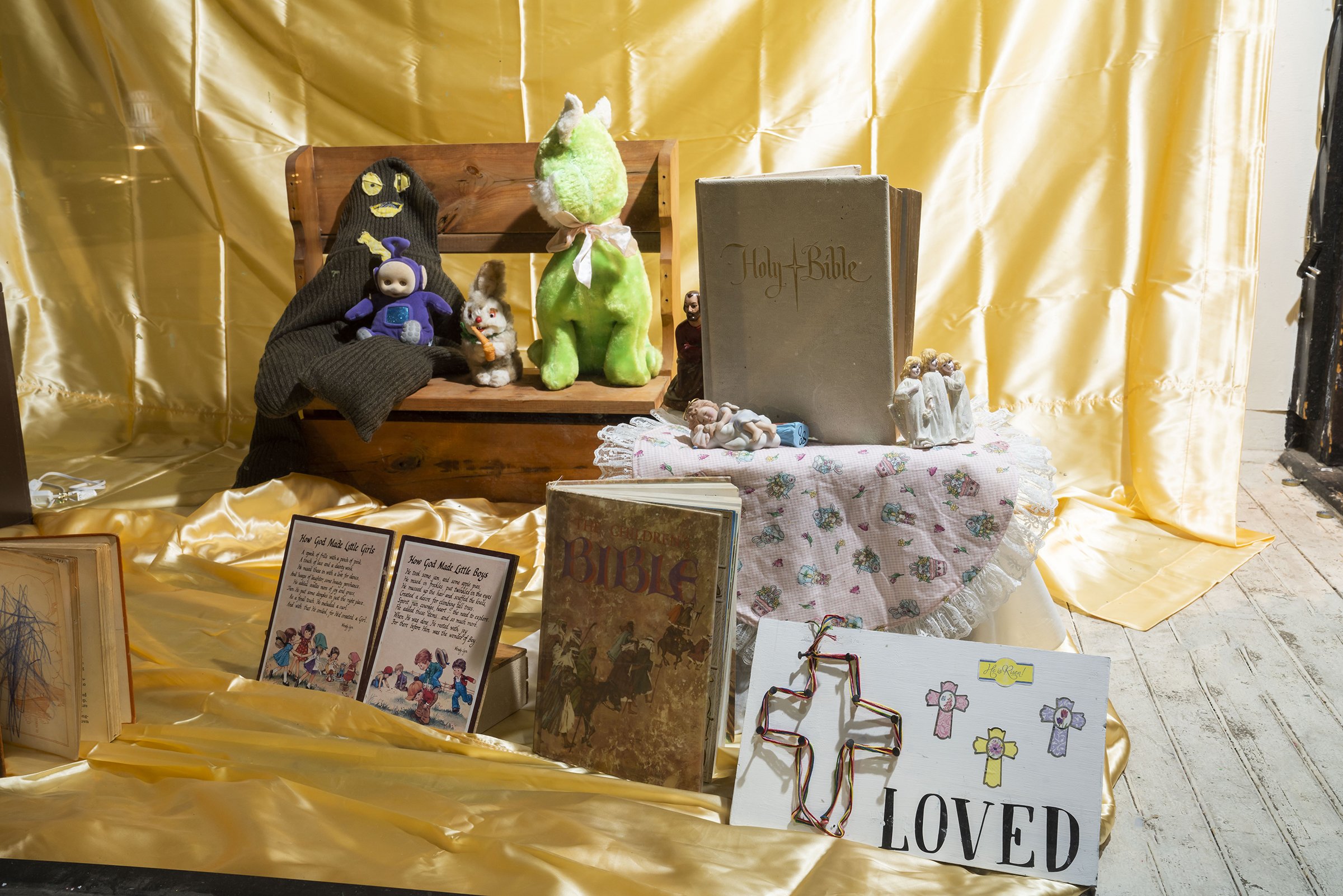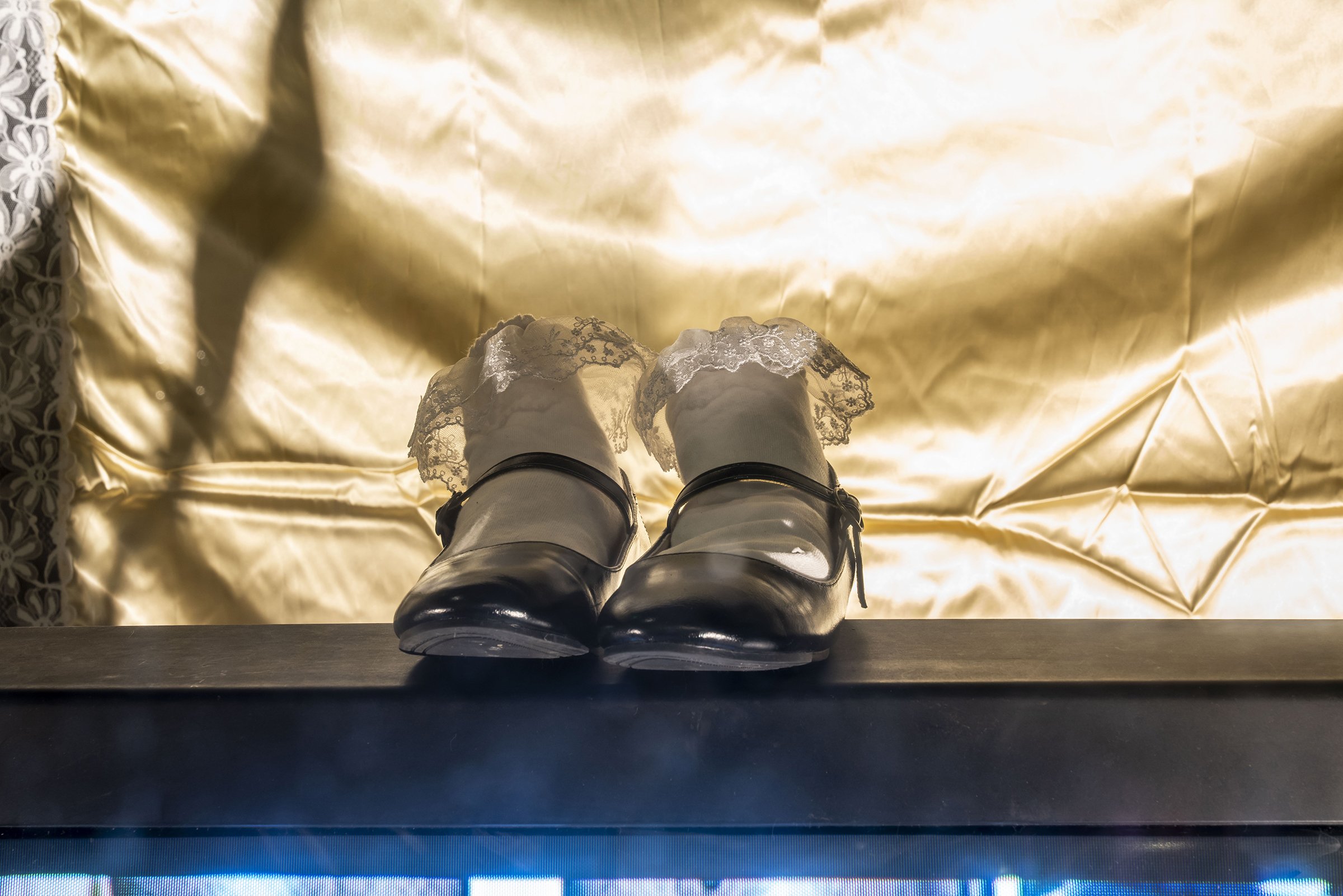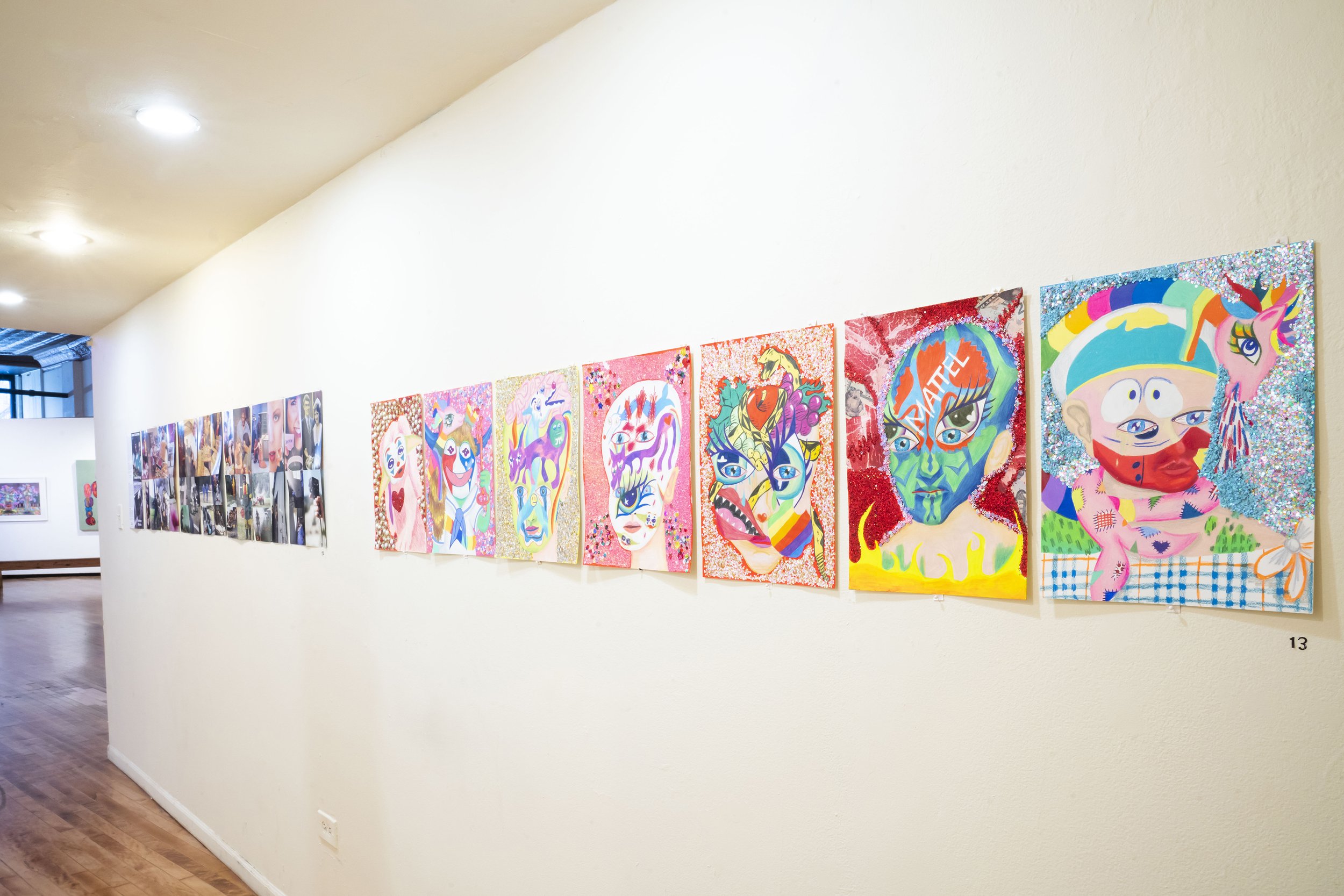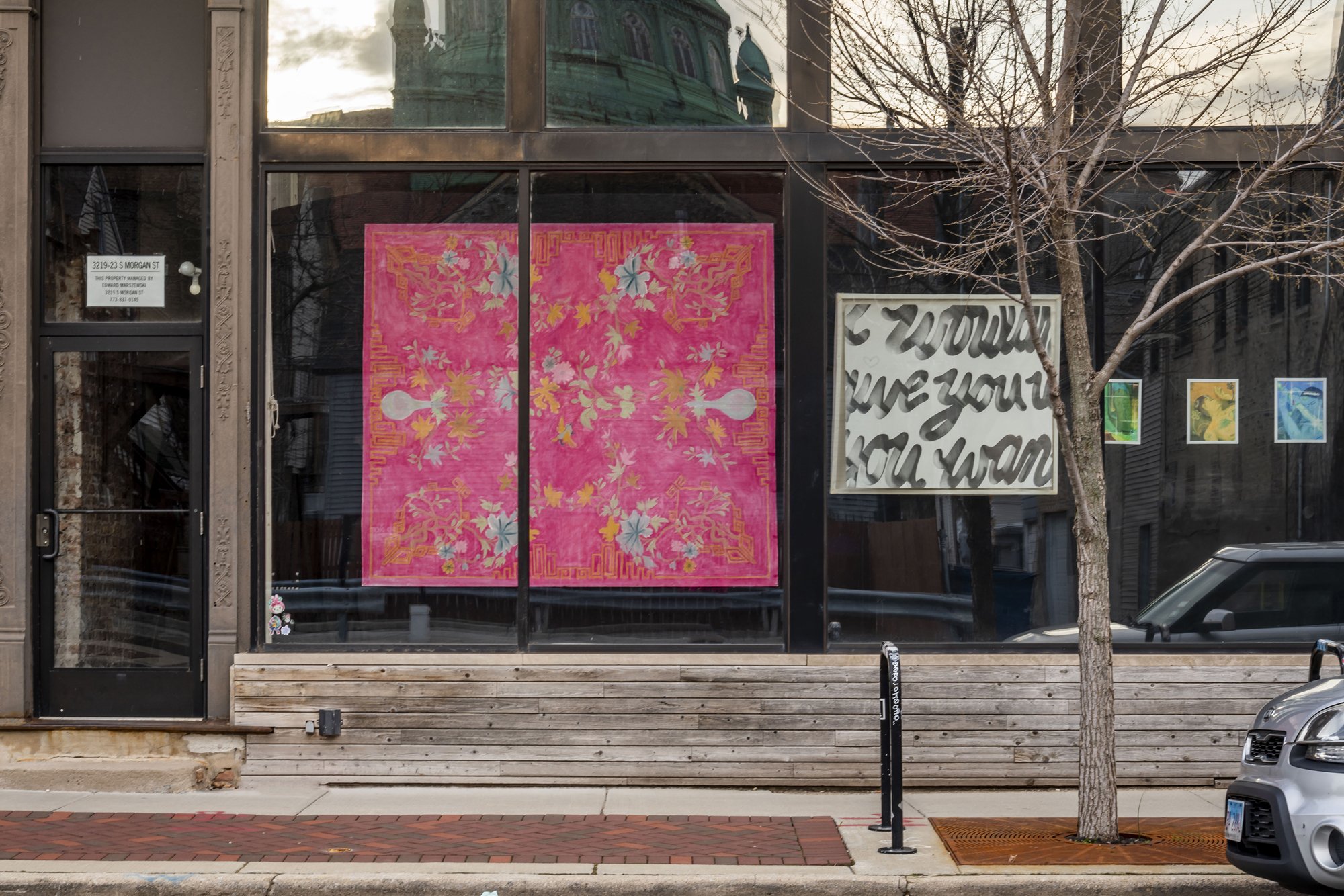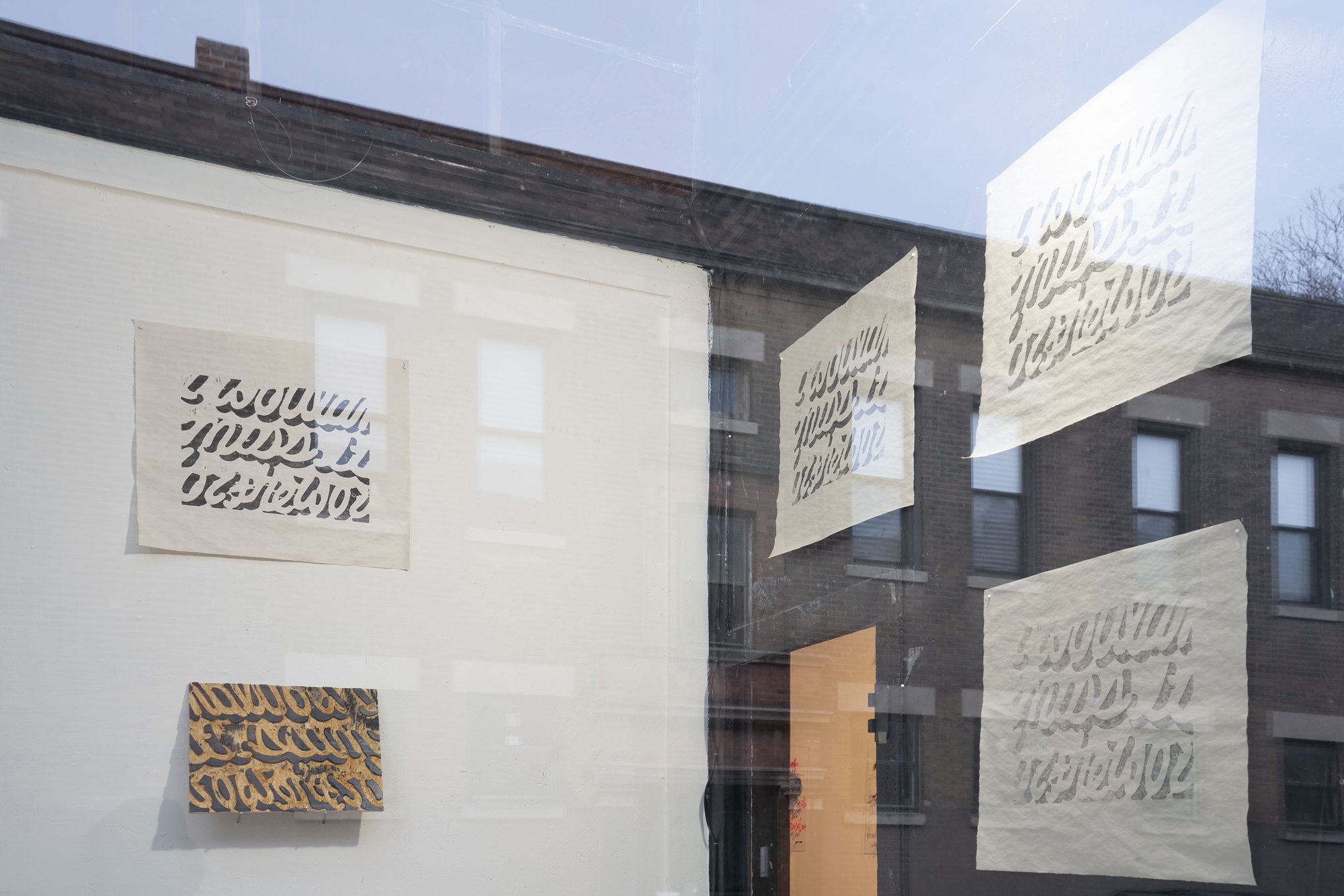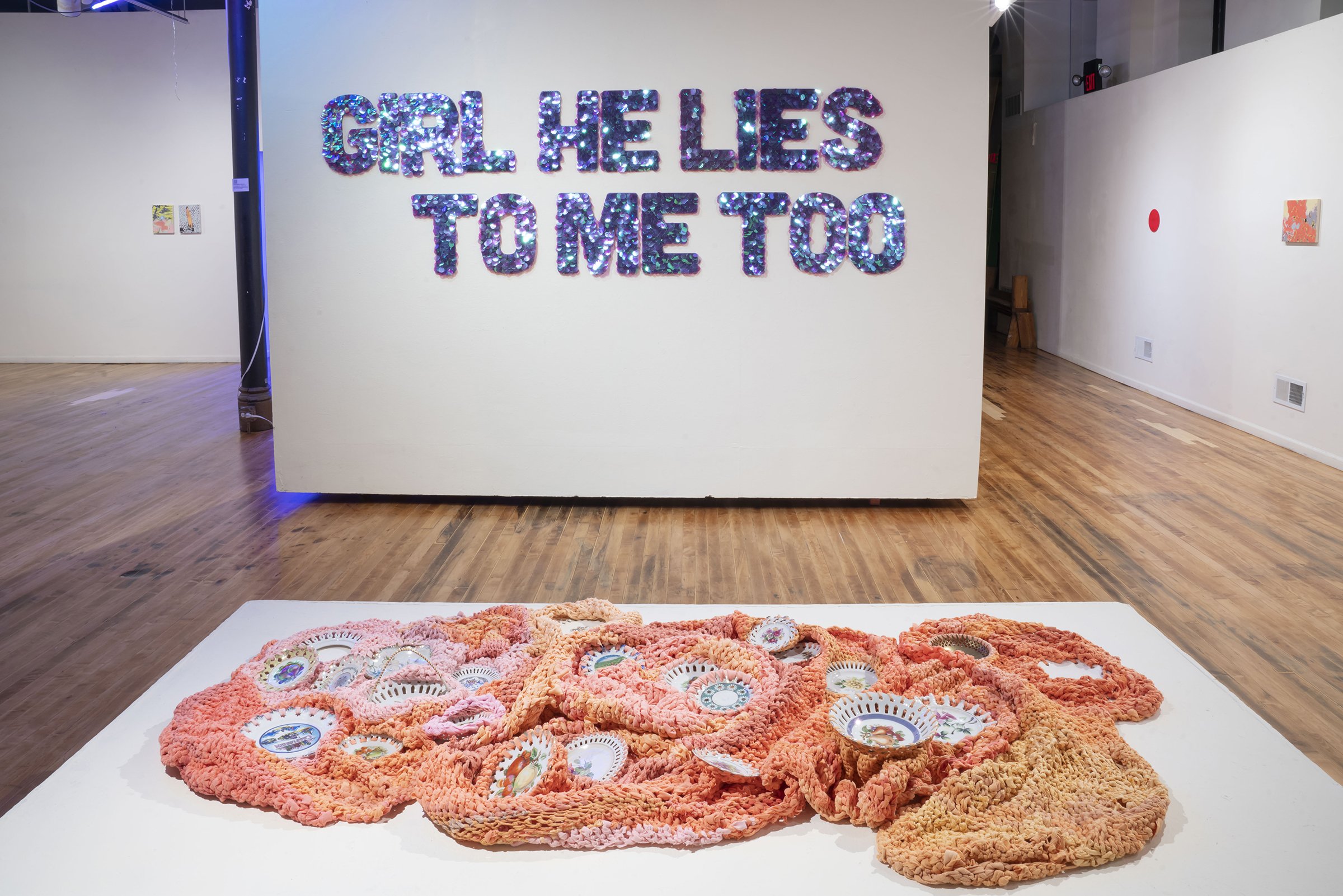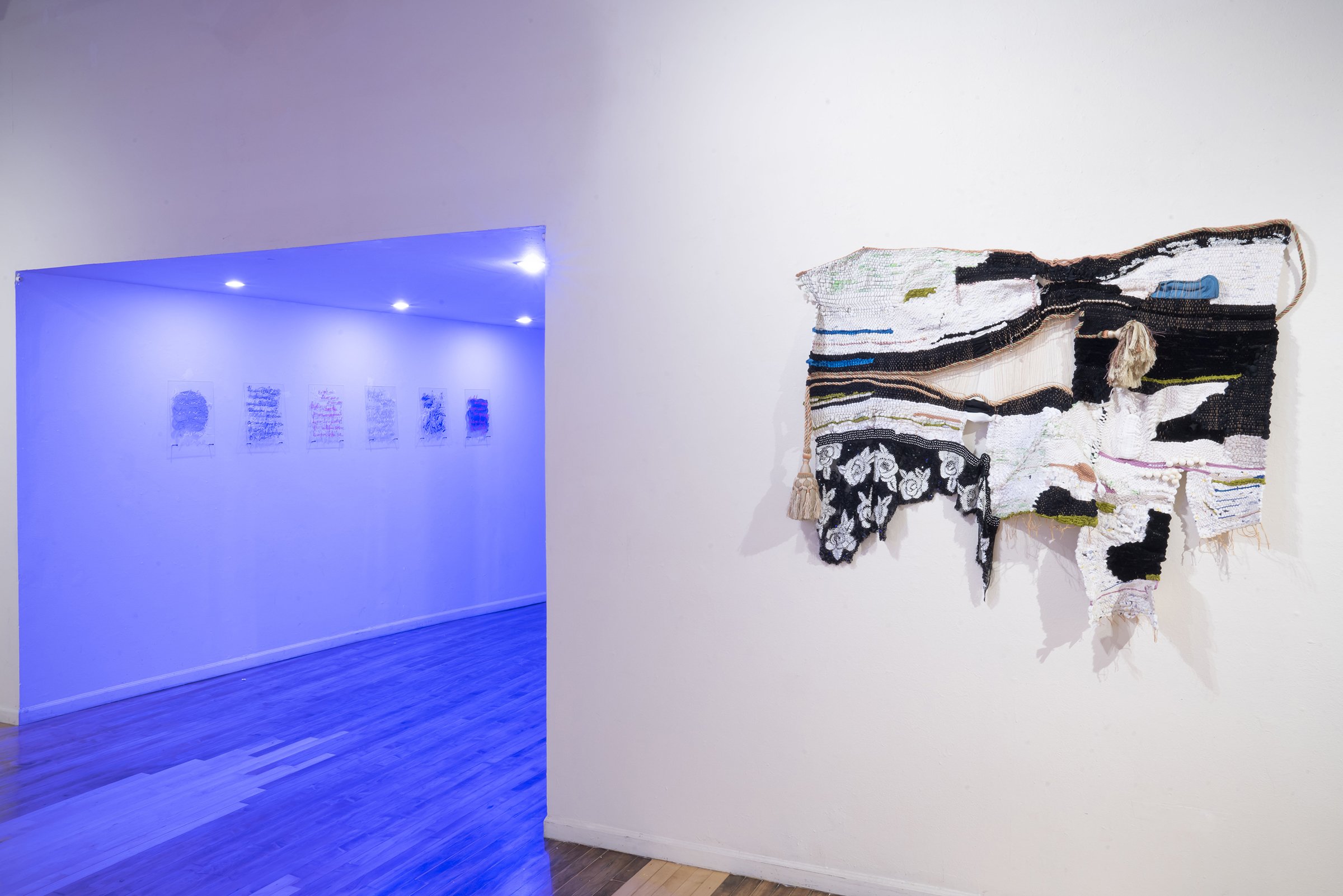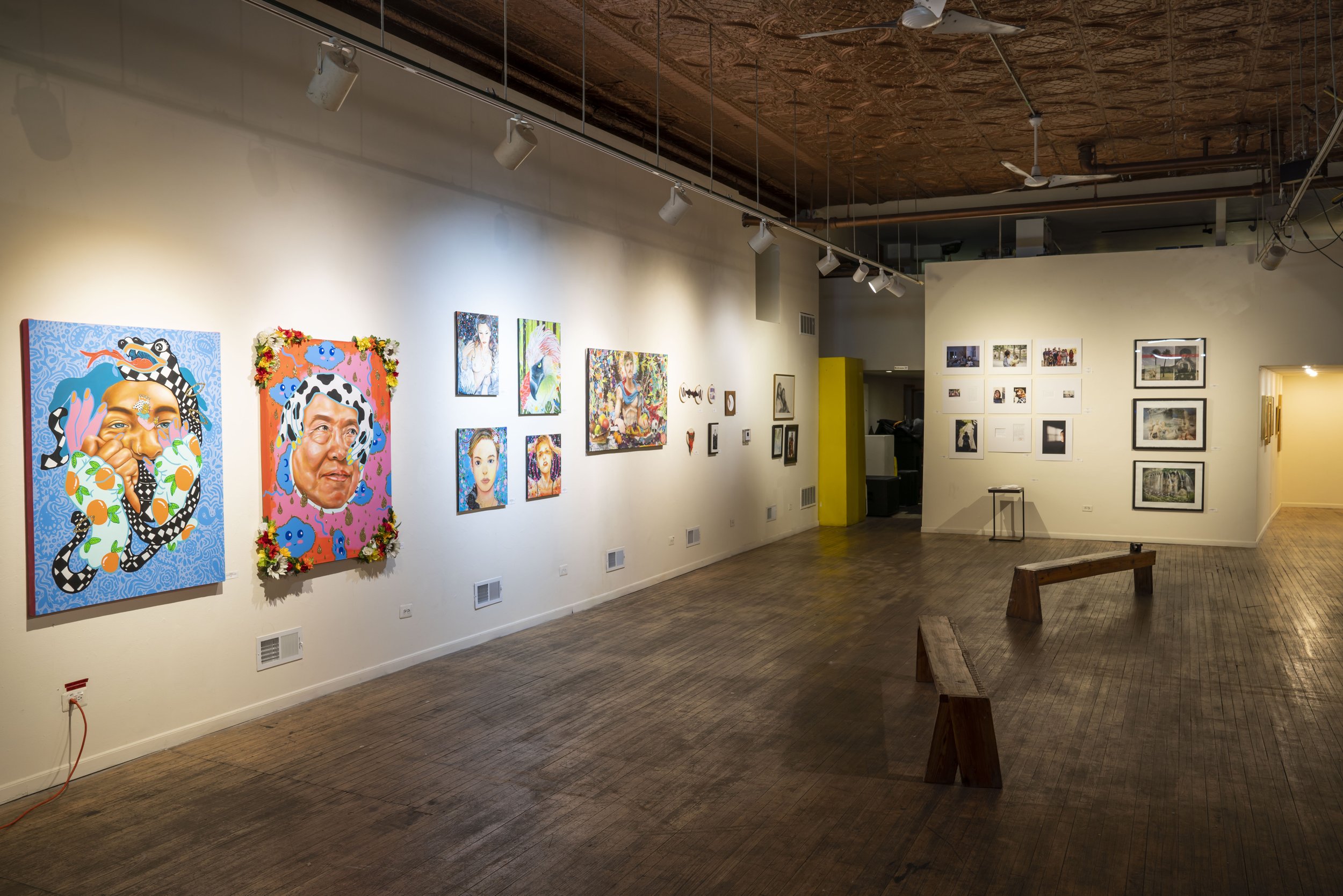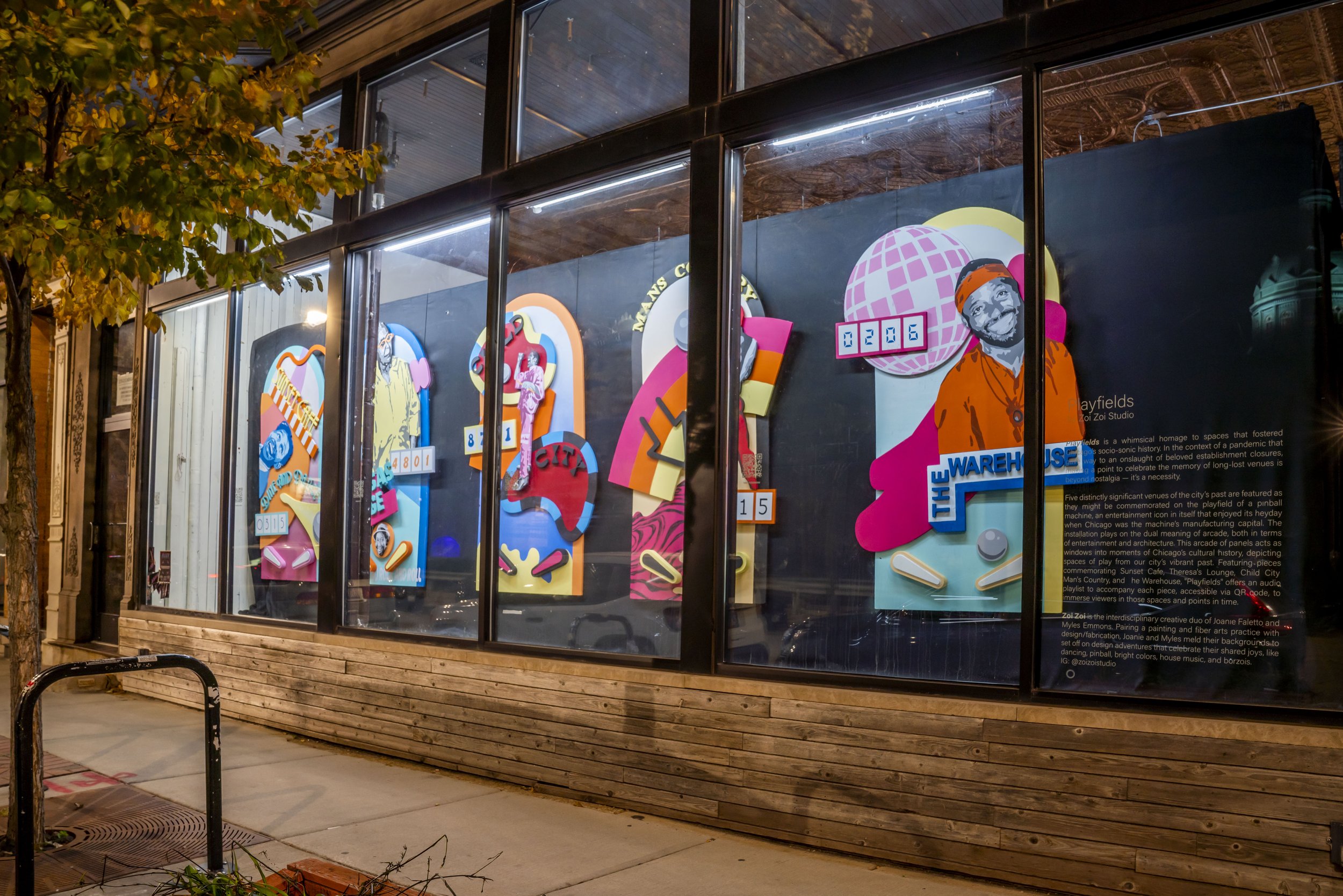Neighborhood, Watch
Neighborhood, Watch is a solo window installation by Chris Collins opening on Saturday, November 12th until December 18th. Join us at Co-Prosperity for the opening reception along with Let it Grow: Hoofprints 10th Year Anniversary Exhibition on Saturday, November 12th from 6-10PM.
“I think you let me stare
so you can turn against yourself with greater violence…
until I see you correctly,
as a man bleeding, not
the reflection I desire.”
-Louise Gluck, “The Mirror”
“Eyes on the street” refers to communing publicly amongst neighbors—when we play and socialize in the public realm, we grow our collective bonds. We become safer, together. With the proliferation of home security devices like the video doorbell, ‘eyes on the street’ now refers to disembodied globes, illuminating with each ‘hello’; constantly watching, collecting neighbors and strangers within iron mountains. Passers-by are reduced to unwitting, involuntary subjects to be surveilled, while homeowners become de-facto police operatives, wary and suspicious. At what point does continual surveillance erode community connection, wearing away the threads that bind? Can we imagine networks of support that don’t perpetuate existing models of oppression, isolation, and mistrust?
In this public installation, Chris Collins envisions an alternate ‘security theater,’ one in which surveillance technology inverts to become a site of social connection and play. “Neighborhood, Watch.” imagines a space in which we can opt into the camera’s gaze: Anyone walking by can knock to receive a video message from their neighbor, then record a response for the next person (who sees your message and responds with theirs, and so on). See something, say something, repeat. It’s a chain, a wave, a community-wide game of telephone. It’s an informal network of “eyes on the street,” all choosing to focus their gaze with curiosity instead of suspicion—seeing one another, not watching.
About the Artist:
Chris Collins is an artist and educator based in Chicago. Collins is concerned with digital labor, and fascinated with the boundless, messy contradictions of the internet. They utilize the tools and vernacular of networked culture to critique, explore vulnerabilities, and create new temporary spaces of engagement.
Collins has exhibited and organized events extensively in Chicago, the US, and abroad, most notably at The Museum of Contemporary Art, The Museum of The Moving Image, Musieums Quartier, and The Goethe Institut. Their projects have been written about in the New York Times, SFMOMA, Rhizome, and others. Chris teaches at Northwestern, SAIC, UIC, and has spoken at various workshops, talks, and conferences.

